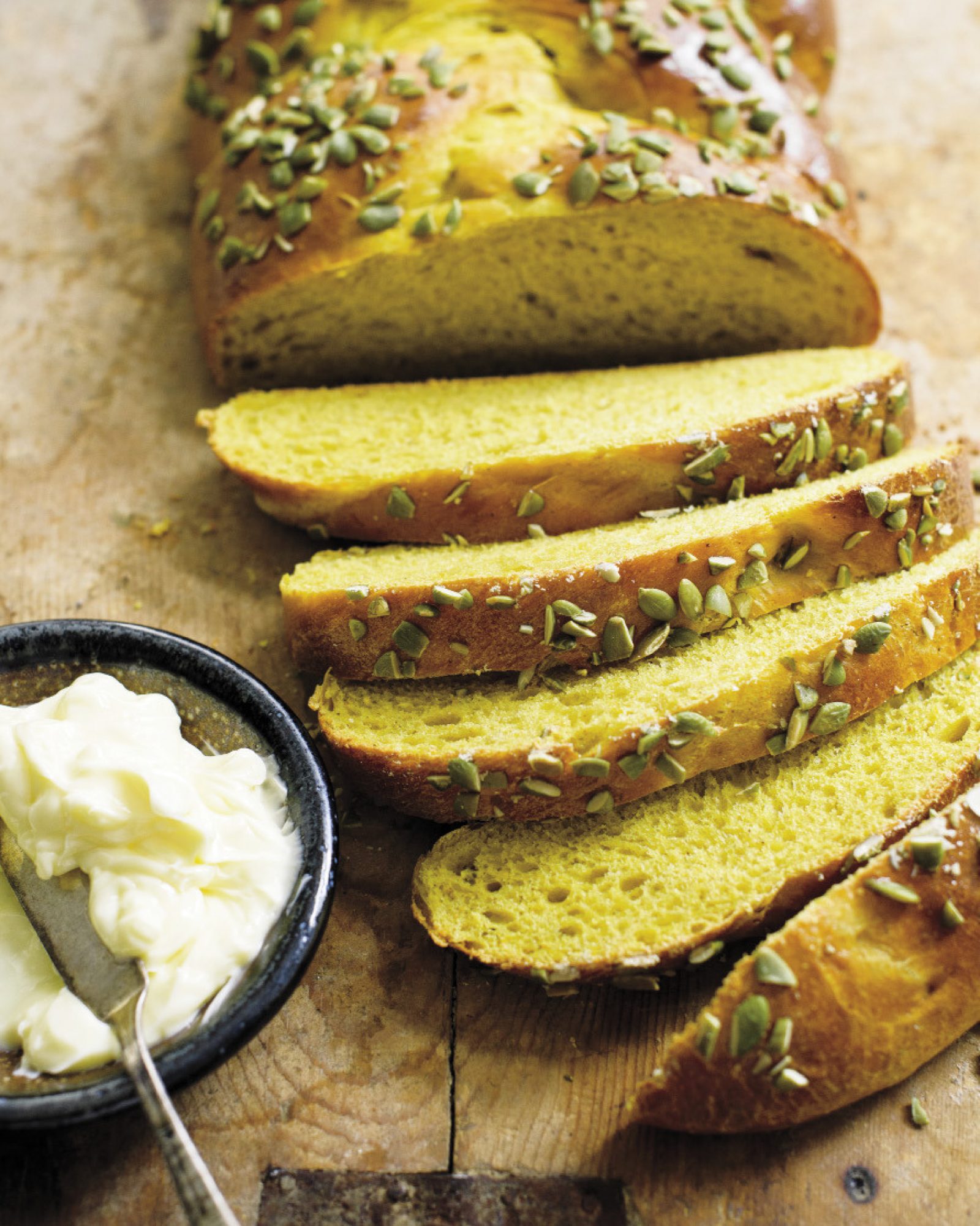Your email address is required to begin the subscription process. We will use it for customer service and other communications from Milk Street. You can unsubscribe from receiving our emails at any time.

German-Style Winter Squash Bread
This inviting, impressive braided loaf gets its warm, golden hue from roasted butternut squash. The squash also gives the crumb a moistness, and the milk, eggs and butter lend a brioche-like richness. The German bread called Kürbisbrot (pumpkin bread, literally translated), in particular Luisa Weiss’ recipe from her book “Classic German Baking,” was our starting point for this autumnal loaf. Kürbisbrot is commonly shaped as a simple round loaf, but we took Weiss’ suggestion and made a special-occasion bread by forming the dough into a braid. We also added a touch of allspice for a warm, subtle fragrance and a sprinkle of pumpkin seeds just before baking. The dough is soft and sticky but also strong and elastic; it requires a sturdy stand mixer to develop a solid gluten structure and would be difficult to make this dough by hand. When you turn the dough out of the mixer bowl, it may seem too wet and batter-like to be shapeable, but with rising and refrigerating, it becomes workable. Store leftover bread at room temperature in an airtight container or zip-close bag for up to three days. It makes great toast once it begins to stale.
Makes one
1¾-pound loaf
Don’t be tempted to use canned squash instead of roasted fresh squash. Its flavor is more muted and its water content alters the moistness of the dough. Also, don’t forget to bring the butter to room temperature before starting the recipe, as it needs to be very soft in order to incorporate properly into the batter-like dough. Finally, don’t add too much more flour during kneading, before the butter is mixed in. If the dough pulls away cleanly from the sides of the bowl, it contains enough flour.
6 hours
45 minutes active, plus cooling
Ingredients
-
1½-2
pound butternut squash, halved lengthwise and seeded
-
¼
cup whole milk
Directions
-
01Heat the oven to 425°F with a rack in the middle position. Mist a rimmed baking sheet with cooking spray. Place the squash halves cut side down on the prepared baking sheet and roast until a skewer inserted through the neck of the squash meets no resistance, 35 to 40 minutes. Remove from the oven, turn the squash halves cut side up and set aside until cool enough to handle.
Pardon the interruption
You need to be a Milk Street Digital Member to see the full recipe
JOIN MILK STREET DIGITAL & PRINT
12 WEEKS FOR JUST $1
and get access to all of our recipes and articles online, as well as in print.
GET DIGITAL & PRINTMy loaf was also flatter than I wanted. Beautiful, but not tall. In hindsight, I wish I had made the three ropes shorter and thicker. Taste was lovely but the texture was a bit dry--much like challah. Our family didn't devour it like I hoped/imaged, so we used the leftovers as wonderful French toast.


What flour would you recommend to make this bread gluten free?